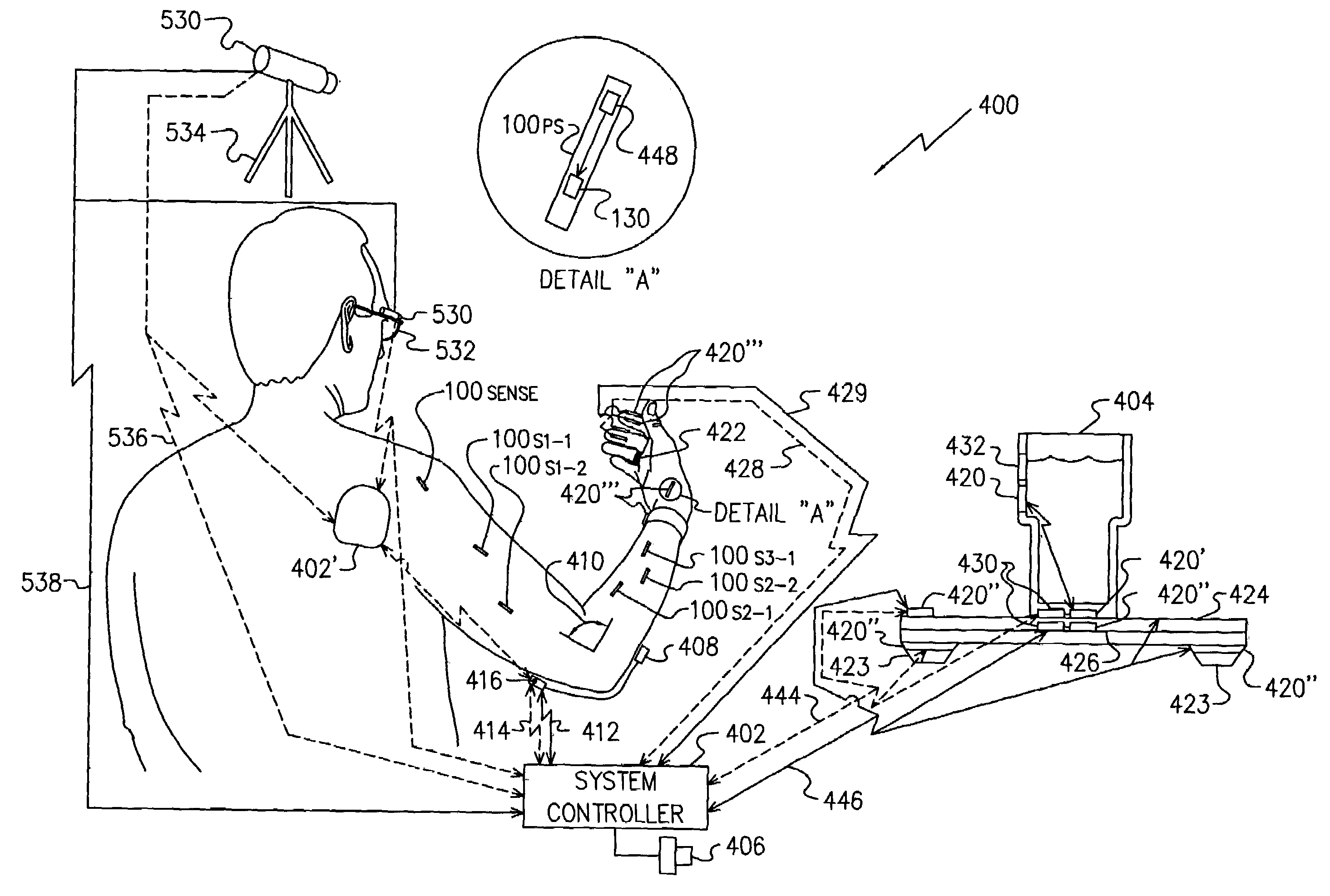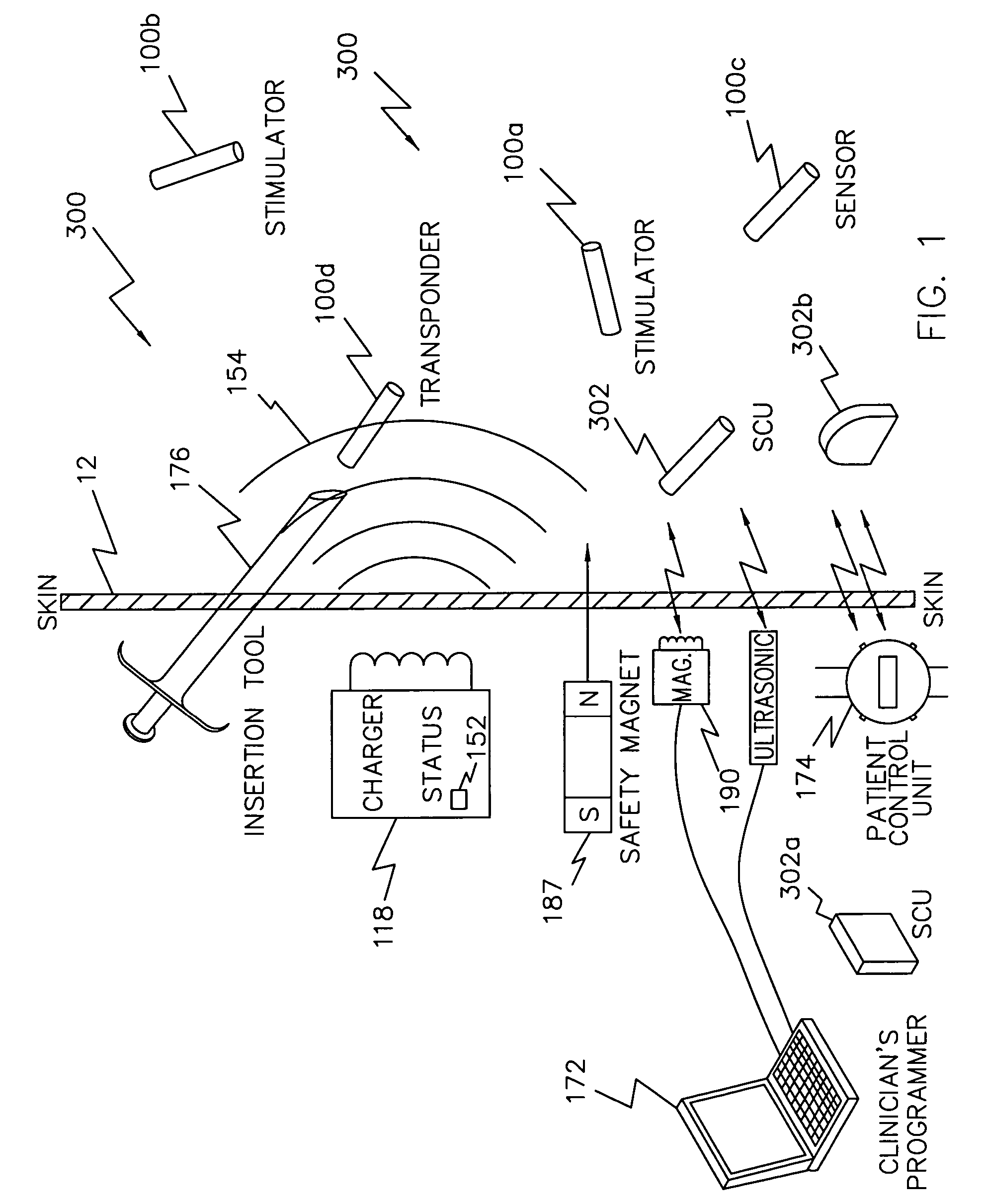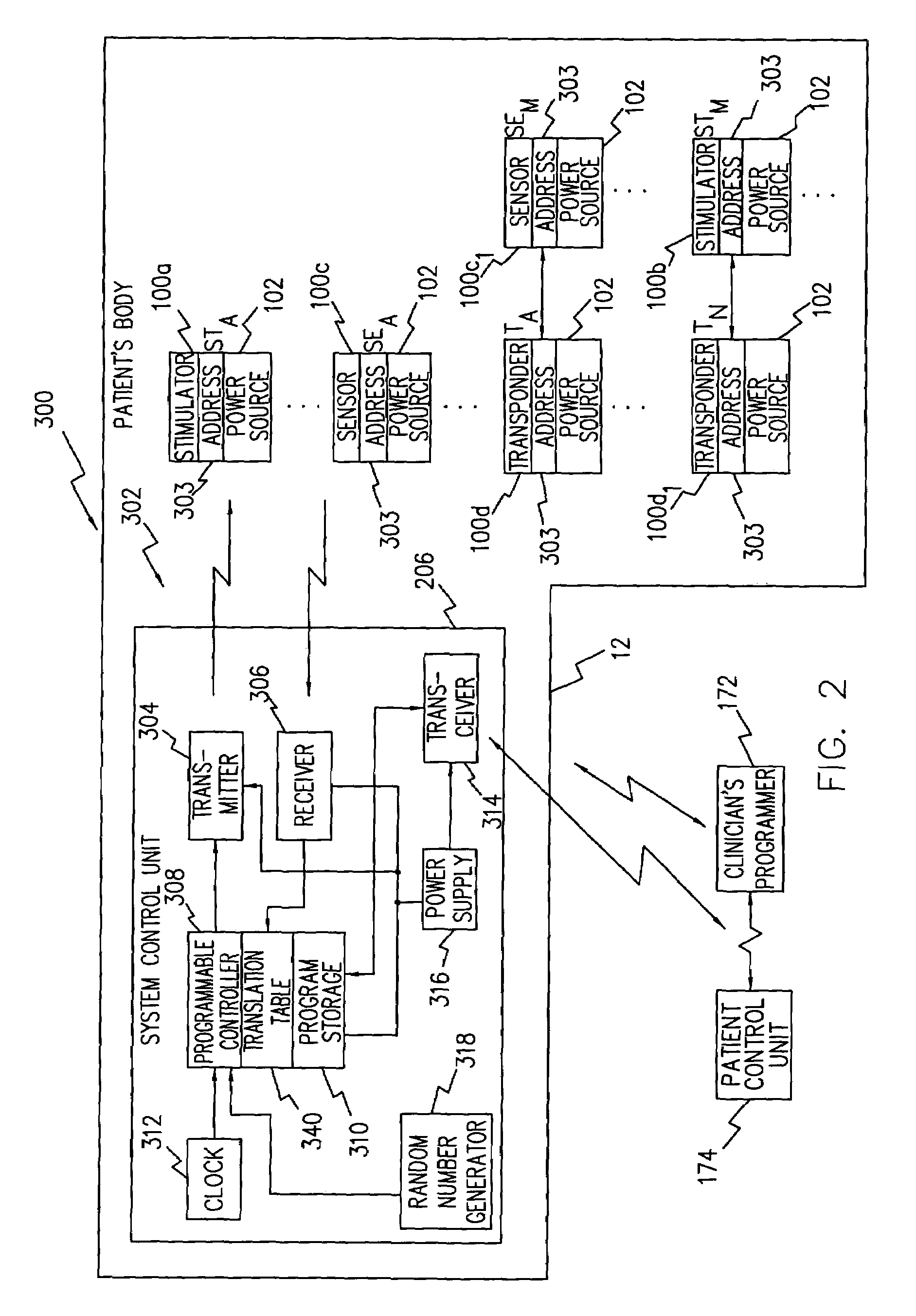System and method suitable for treatment of a patient with a neurological deficit by sequentially stimulating neural pathways using a system of discrete implantable medical devices
a medical device and sequential stimulation technology, applied in the field of discrete implantable medical devices, can solve the problems of inability to achieve the effect of conventional therapy in the treatment of upper limb impairment, and inability to achieve the effect of conventional therapy
- Summary
- Abstract
- Description
- Claims
- Application Information
AI Technical Summary
Benefits of technology
Problems solved by technology
Method used
Image
Examples
Embodiment Construction
[0037]The following description is of the best mode presently contemplated for carrying out the invention. This description is not to be taken in a limiting sense, but is made merely for the purpose of describing the general principles of the invention. The scope of the invention should be determined with reference to the claims.
[0038]The present invention is directed to systems for stimulating neural pathways, e.g., muscles and / or associated nerves, of a patient's body for the purpose of medical treatment by rehabilitating weakened muscles and using neuroplasticity to retrain sequential muscle movements and / or to provide the ability to directly deliver functional motor movements. Use of the present invention is of particular value for treating a patient following a stroke. More particularly, such systems are characterized by a plurality of discrete devices, preferably battery powered but may include RF-powered devices as well or in combination, configured for implanting within a pa...
PUM
 Login to View More
Login to View More Abstract
Description
Claims
Application Information
 Login to View More
Login to View More - R&D
- Intellectual Property
- Life Sciences
- Materials
- Tech Scout
- Unparalleled Data Quality
- Higher Quality Content
- 60% Fewer Hallucinations
Browse by: Latest US Patents, China's latest patents, Technical Efficacy Thesaurus, Application Domain, Technology Topic, Popular Technical Reports.
© 2025 PatSnap. All rights reserved.Legal|Privacy policy|Modern Slavery Act Transparency Statement|Sitemap|About US| Contact US: help@patsnap.com



